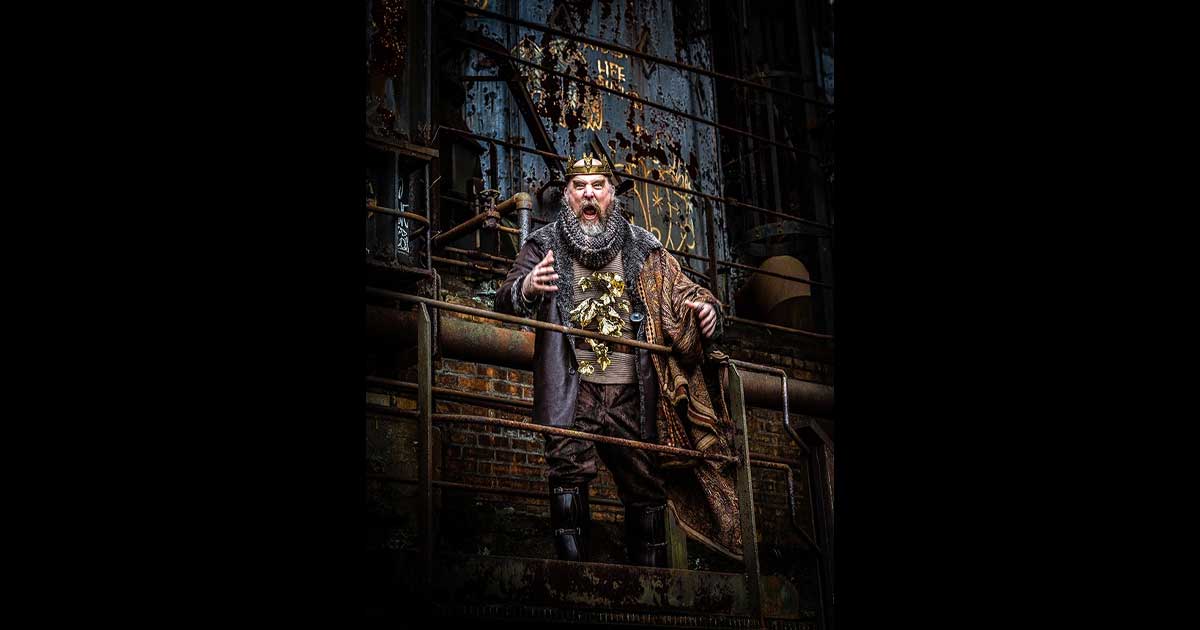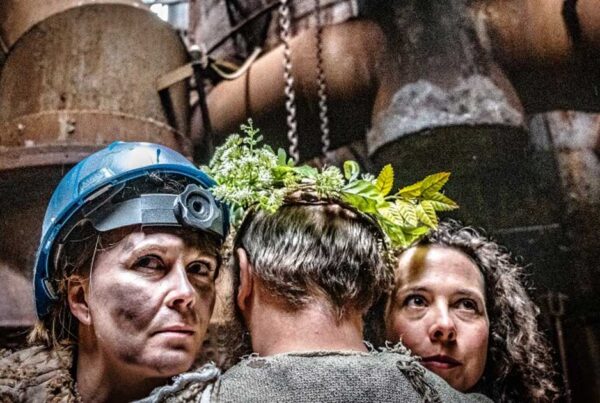
Pittsburgh City Paper – Inside a giant blast furnace, a colossal monument to Pittsburgh’s heyday of steel and iron production, it’s impossible to ignore thoughts of workers toiling away, smelting metals for hours on end. Even if an audience is being whisked away to Great Britain circa 8th century B.C., the sight of Carrie Blast Furnaces National Historic Landmark in Swissvale is undeniably stark.
Luckily, Quantum Theatre’s new production of King Lear leans into its surroundings, integrating the legacy of steel workers into the Shakespearean tragedy. The production, directed by Risher Reddick, is somewhat typical for Quantum, as it seeks to immerse the audience directly into the play, but the setting of the historic U.S. Steel complex is unique.
The story follows the journey of King Lear (Jeffrey Carpenter), who has decided to split up his kingdom between his three daughters. After denying his favorite daughter, Cordelia (Catherine Gowl), any land for failing to praise him adequately, Lear divides the kingdom between Goneril and Regan and it all goes downhill from there, with backstabbing, extra-marital affairs, violence, and cruelty.
All this unfolds as Lear descends into madness, and Carpenter masterfully showcases all the sides of Lear: his pompousness, his insecurity, his insanity, and his benevolence.
The play is condensed into two acts instead of the usual five. This allows most of the story to take place on a stage directly in front of the main blast furnace, complete with stairs and elevated walkways that act as balconies. Wild birds zoom over the actors, but the cast maintains focus vigilantly. Joe McGranaghan turns in a wonderfully evil performance as Edmund, the play’s main antagonist.
The second act is set in a small wooded paddock on the far side of Carrie Furnaces. The audience walks along a footpath lit by small blue lights meant to symbolize the trek to Dover done by the characters. The intermission was timed perfectly, as a periwinkle sky dimly lit the massive industrial features of the furnaces, adding to the foreboding nature of the story.
Costumes and accessories are a mix of early English garments and steelworks gear. Music and instruments pay homage to the songs of early 20th-century union workers. Lear’s fool plays the blues on a harmonica, and the Kentucky miners’ union-organizing song “Which side are you on?” is sung multiple times throughout the play.
King Lear is about as tragic as Shakespeare plays get, so don’t expect any semblance of a happy ending. But superb acting and a once in a lifetime setting will make you appreciate the tragedy and decline of the characters.




